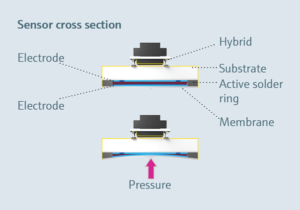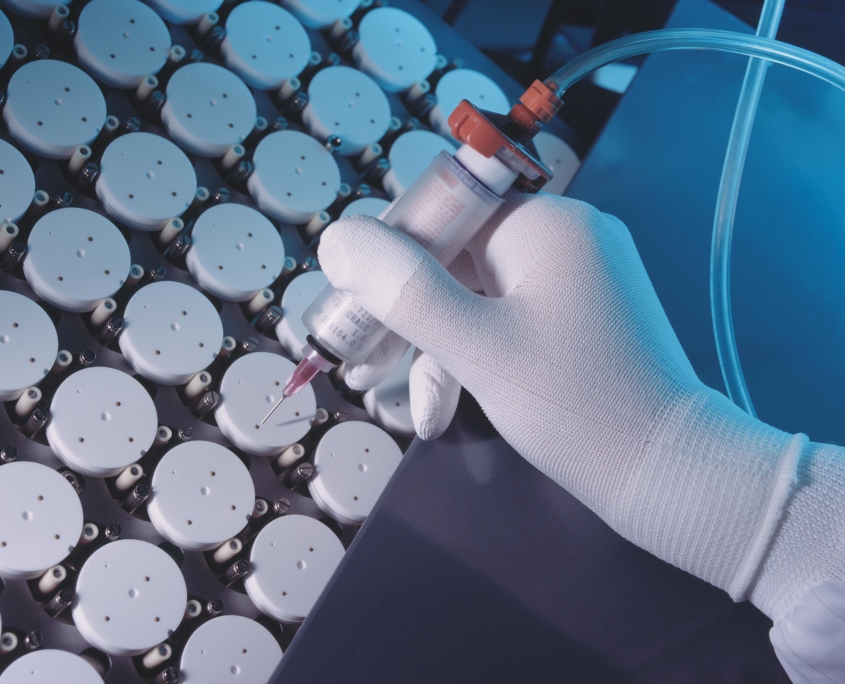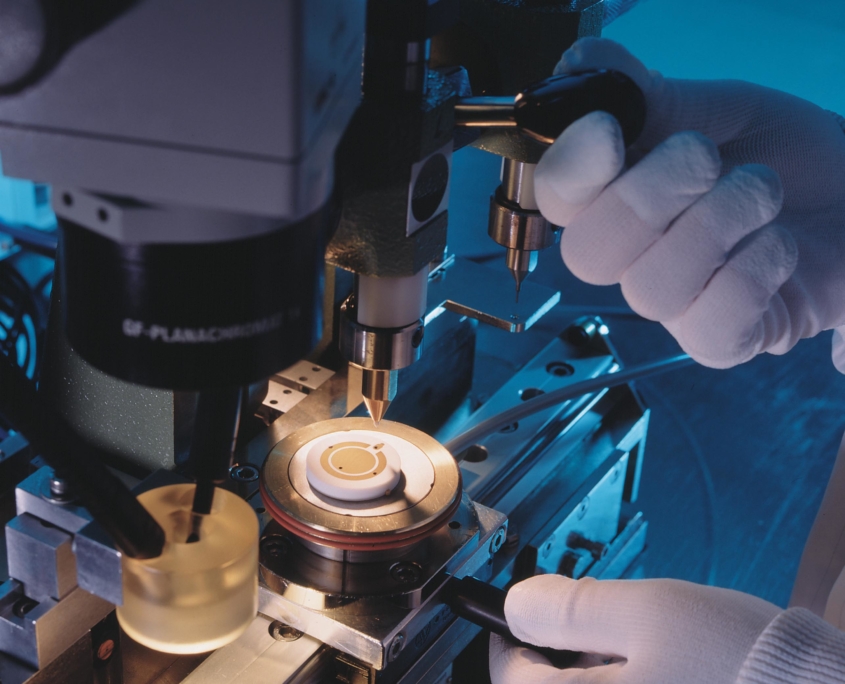Ceracore technology
Our basic technology for your success
The Ceracore sensor is based on a capacitive measuring principle. In this case, the main body and membrane act as components of a capacitor. If pressure is applied to the sensor, the distance between the two electrodes changes due to the deflection of the membrane. This leads to a change in capacity, which is converted via the transmitter into an electrical output signal. Capacitive ceramic sensing technology offers a number of advantages.
Advantages of ceramic technology:
- Patented metallic active solder connection of sensor base element and membrane
- Metallic coating of the sensor base element for improved EMC compatibility and reduced installation sensitivity
- Made of high-purity ceramic (99.9% Al2O3), highly resistant and chemically neutral to a wide range of process media
- As a dry measuring cell without the use of oils for pressure transmission, the Ceracore is absolutely vacuum-resistant
- Highest overload resistance
- High reference accuracy of 0.1%
Security:
- Self-monitored measuring cell for maximum safety
- Communication via secure protocols
- Improved EMC resistance (guarding)
- Approved z. Eg ATEX, …
- RoHS
- FDA listed materials
Application-specific configuration:
- Sensor pre-configured at the factory (damping, turn-down, measuring range, …)
- Adjustable measuring rate for optimal resolution / power consumption
- Customer-side configuration possible
- Output of the pressure and temperature signal possible
- Power consumption 2.5 to 10 mW
- Various sizes (diameter: 17.5 mm and 32.4 mm)
Communication:
- Analog output signal – voltage output ratiometric or voltage output absolute
- Digital output signal – SPI or UART interface
- Digital and analog output signal combinable
- switching output
- temperature output




